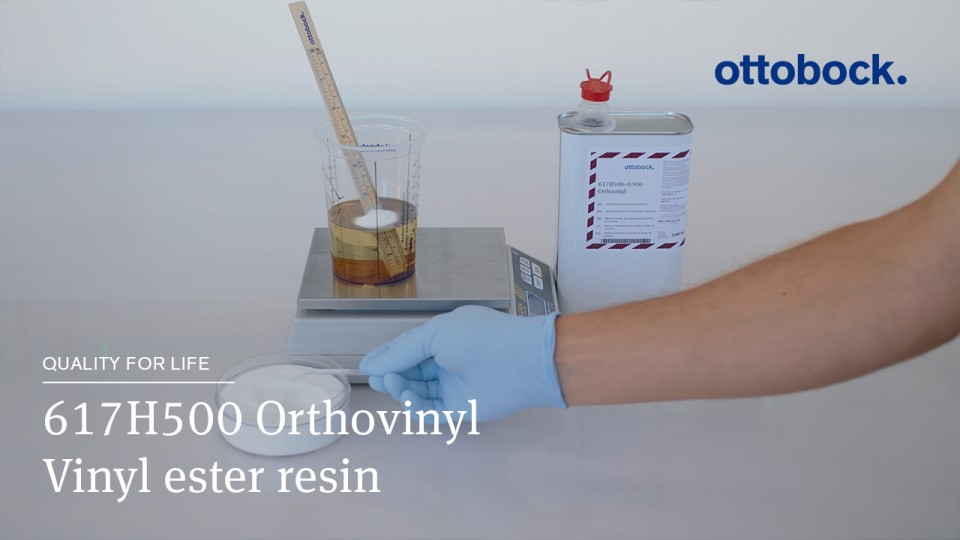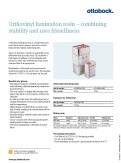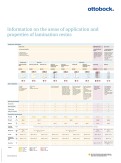Orthovinyl lamination resin


All benefits at a glance
All benefits at a glance
- The resin exhibits a slightly yellow tinge in the liquid state which is not, however, visible in the laminate
- As with an acrylic resin, the setting time can be reliably determined based on the added hardener and the temperature
- Higher degree of stability than an acrylic resin due to better bonding to the reinforcement fibres
- Very easy to sand
- Excellent balance between matrix and reinforcement material
- Can be coloured with Ottobock pigment pastes
- Small number of layers possible
- Very good impregnation, especially of carbon fibres
- The product fulfils all performance and safety requirements for the manufacture of medical devices provided that the prescribed instructions for use are observed
Specifications
Specifications
Orthovinyl lamination resin
| Article number | 617H500=0.900 | 617H500=4.600 |
|---|---|---|
| Net contents | 0,9 kg | 4,6 kg |
| Hardener | 617P37=0.150 Hardener for Orthovinyl (0,15 kg net content) | |
| Safety instructions | For further information on the safety instructions, please see the corresponding Ottobock safety data sheet. | |
Mixing ratio
| Resin | Hardener | Pigment paste | Pot life | Setting time |
|---|---|---|---|---|
| 100 parts | 1 part | Max. 3 parts | 35 minutes | 75 minutes |
| 100 parts | 2 parts | Max. 3 parts | 20 minutes | 50 minutes |
Processing instructions:
- All standard Ottobock carbon fibre and fibreglass products can be processed with Orthovinyl
- Use Ottobock 617P37=0.150 hardening powder
- Do not use any thinners
- Final annealing: one hour per 1 mm laminate thickness at 80 °C
Downloads

Please download file:
- Orthovinyl lamination resin 235.41 kB | PDF
Orthovinyl lamination resin – combining stability and user friendliness
- Orthovinyl laminating resin 617H500
- Hardener for Orthovinyl 617P37=0.150

Please download file:
Information on the areas of application and properties of lamination resins
- Duroplastics